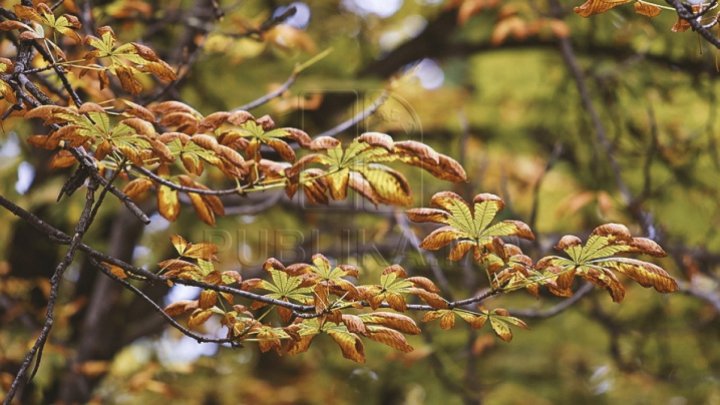Chestnuts from Capital ARE IN DANGER! What happens to trees and what the specialists say
 foto: publika.md
foto: publika.md
In a few years, the Chestnuts could disappear from Moldova. According to experts from the Institute of Genetics, Plant Physiology and Protection, trees are affected by mining muds, which this year has increased due to high temperatures and drought. The insect has virtually affected all the trees.
Experts say that this year the chestnut moth has multiplied, and so far, the trees have been affected by four generations of insects. Moreover, if the authorities fail to combat the pests, the chestnuts may dry out completely.
"Over the course of six or eight years, there is an extraordinary phenomenon for siviculture and decorative crops, which is called degradation of decorative crops. Nearly one percent will ensure the destruction of these cultures," said Leonid Voloşciuc, head of the laboratory of the Institute of Genetics, Plant Physiology and Plant Protection.
According to specialists, a solution would be spraying with chemicals or installing pheromone plaques that would prevent the moths from growing. At the same time, dried leaves must be processed.
"In one kilogram of dried leaves there are up to four thousand horns that hibernate, are reserved for next year," explained Eugenia Tulgara, Head of Health Monitoring at the National Agency for Food Safety.
On the other hand, municipal authorities claim that the trees in the capital have dried out due to sudden temperature changes. According to Green Spaces, Chestnuts have been sprinkled three times this year.
"I think, first of all, the heat and the drought, and, of course, the low temperatures in the winter. Let us also look at what, in recent years, is summer, summer, summer, and at a moment given that it is already winter and not all species manage to accommodate all these stresses, "said Sergei Carp, the head of the Chisinau City Green Department.
Molia mining appeared in our country in the 90's.
Experts say that this year the chestnut moth has multiplied, and so far, the trees have been affected by four generations of insects. Moreover, if the authorities fail to combat the pests, the chestnuts may dry out completely.
"Over the course of six or eight years, there is an extraordinary phenomenon for siviculture and decorative crops, which is called degradation of decorative crops. Nearly one percent will ensure the destruction of these cultures," said Leonid Voloşciuc, head of the laboratory of the Institute of Genetics, Plant Physiology and Plant Protection.
According to specialists, a solution would be spraying with chemicals or installing pheromone plaques that would prevent the moths from growing. At the same time, dried leaves must be processed.
"In one kilogram of dried leaves there are up to four thousand horns that hibernate, are reserved for next year," explained Eugenia Tulgara, Head of Health Monitoring at the National Agency for Food Safety.
On the other hand, municipal authorities claim that the trees in the capital have dried out due to sudden temperature changes. According to Green Spaces, Chestnuts have been sprinkled three times this year.
"I think, first of all, the heat and the drought, and, of course, the low temperatures in the winter. Let us also look at what, in recent years, is summer, summer, summer, and at a moment given that it is already winter and not all species manage to accommodate all these stresses, "said Sergei Carp, the head of the Chisinau City Green Department.
Molia mining appeared in our country in the 90's.